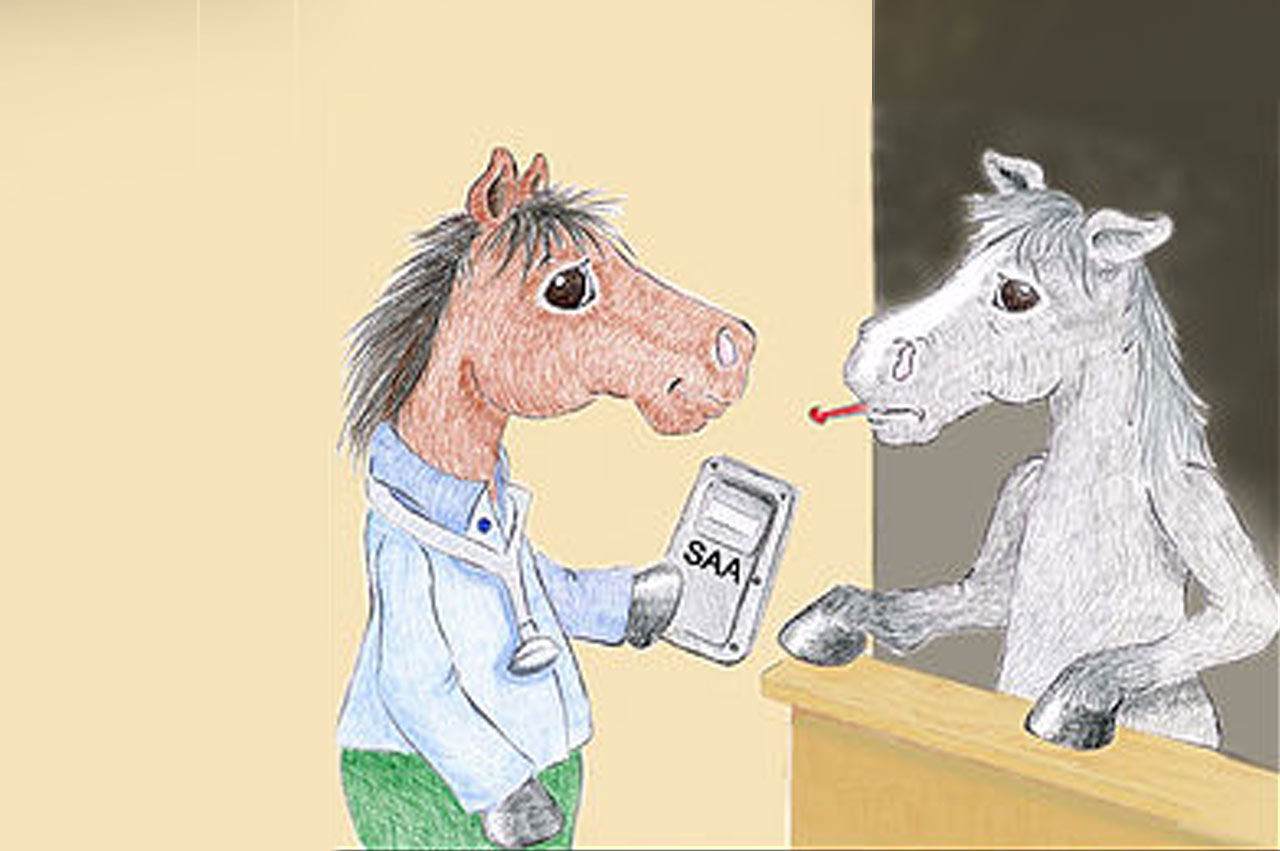SAA = Serum amyloid A. SAA is found in very low quantities in normal horses. It is not secreted until inflammation occurs.
When a horse is exposed to infectious agents (bacteria, viruses) the SAA level in the blood will rise, while allergic and autoimmune inflammatory processes are not likely to cause an increase in SAA production. Therefore, it can be helpful in differentiating an infectious process from a non-infectious inflammatory response (for example heaves versus a respiratory infection).
SAA rises fast after an inflammatory stimulus (within 6-12 hours) and goes down quickly. Since the SAA level will correlate to resolution of infection, it can be used to determine when to stop antibiotics.
We are pleased to announce that we can now offer a stall side SAA test right on the farm. The SAA test takes just 10 minutes to run and can help us make on the farm decisions while waiting for full bloodwork to come back.
SAA increases with systemic infections, such as: Anapslasma, influenza, coronavirus, respiratory infections, pneumonia, or cellulitis.
SAA does not increase for the following inflammatory reactions occur: Walled off infection, such as a hoof abscess or localized abscess. It will not increase due to heaves or in the presence of allergic reactions.

